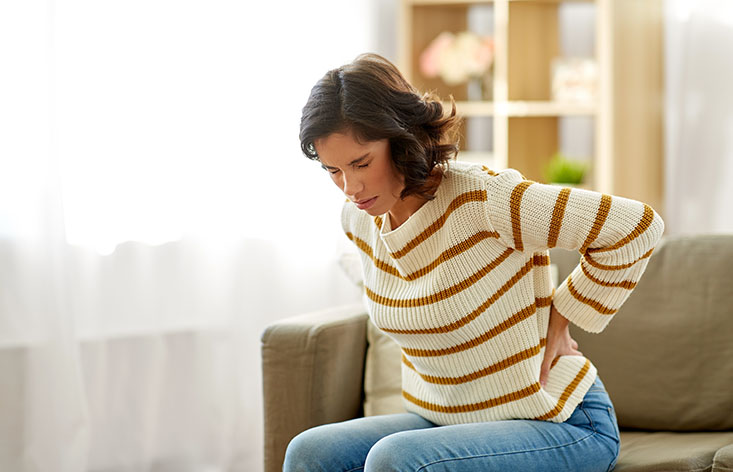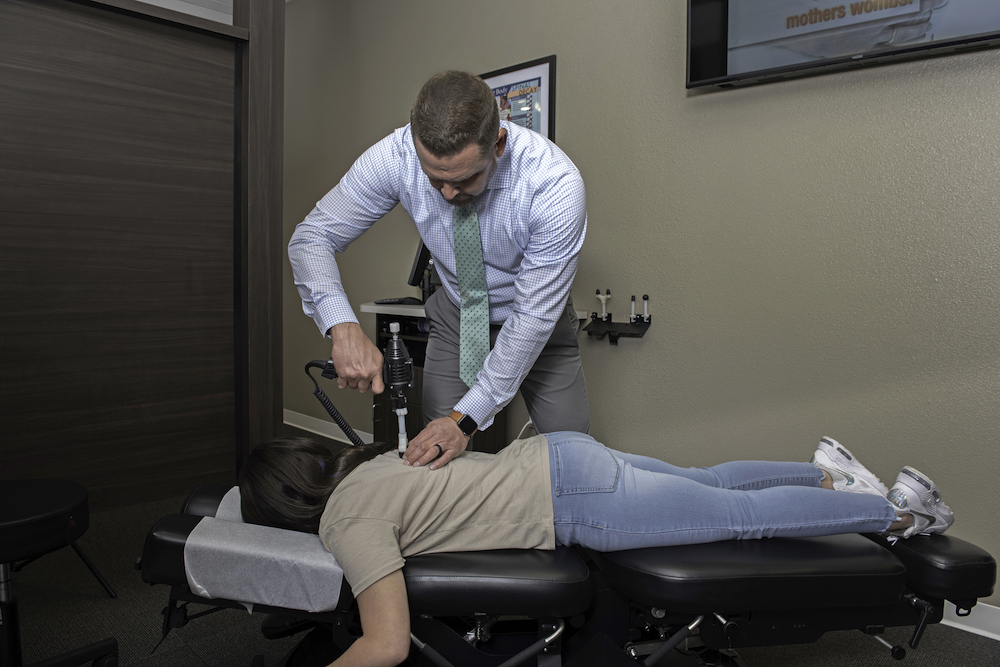How to Care for Lower Back Pain
4 min read

Few feelings compare to the discomfort of lower back pain. Unfortunately, many people suffer from lower back pain making activities such as exercise, work, or even getting in and out of the car very painful. Properly caring for your back when it hurts can help you get some relief and avoid injuring it again.
Who is at Risk of Developing Lower Back Pain?
Literally just about anyone is at risk for lower back pain, but sadly as we get older it's more common. It’s also common for athletes or those who do a lot of physical work as part of their job. Even people who sit in one spot for most of the day for their jobs can develop back pain if their backs aren’t supported properly!
People who rarely exercise, are overweight, or smoke are even more likely to have back pain.
Common Causes of Lower Back Pain
There’s acute back pain that you might experience after an injury, a car accident or doing something that put too much pressure on your lower back discs and muscles. That should get better over the course of a week or two.
There’s also chronic back pain which is ongoing and doesn’t seem to go away as easily. Chronic back pain, caused by a condition such as one of these, is common as we age.
Spinal Osteoarthritis: This condition is usually the result of normal wear and tear on the neck and back over time. Symptoms include neck pain, stiffness, back pain, and shoulder pain.
Bulging Disc: A bulging disc occurs when a disc in the spinal column protrudes outside of its typical area. The disc hasn’t ruptured, but it causes pain when the bulging disc pushes on a nerve in the spine. There are things that can be done to get the disc to go back to its normal position.
Herniated Disc: A herniated disc is a condition in which a disc in the spine cracks and the inner fluids leak out. Because the leaking of fluid causes pressure and pushes against the nerves, the pain can be severe. Herniated discs are common in the lower back.
Degenerative Disc Disease: The discs that are between the vertebrae of the back help to cushion and absorb shock. Overtime, these discs can reduce in size and provide less cushion, allowing the vertebrae to rub together. This condition typically causes mild to moderate pain that worsens with activity.
Lumbar Spinal Stenosis: This condition frequently affects those who are 50 years of age and up and occurs when the spinal canal in the lower back becomes narrower, compressing the nerves. This leads to chronic pain and pressure in the back.
How to Relieve Lower Back Pain
Because lower back pain can range from being mild to full-on debilitating there are a lot of different treatments. Regardless of where you fall on the spectrum, you’ll likely want some relief so that you can get back to normally living your life. Initially, you may be advised to support your back pain with ice or over the counter pain medications such as Aleve or Ibuprofen. But you can’t do that for long! If the pain doesn’t start to get better on its own it’s probably time to see a chiropractor.
Chiropractic Care for Lower Back Pain
There are a lot of ways to help relieve lower back pain using chiropractic techniques.
Lumbar traction is performed using our Back on Trac system to stretch the space between the vertebrae in the lower back. By stretching the spine and relaxing it with heat and vibrations, we can help increase the space between the vertebrae to relieve pressure and pain. It also helps any bulging disks to heal quicker with less pressure pushing down.
Cold laser therapy uses light energy to improve blood flow and promote healing in the muscles and tendons in the lower back. This treatment can be used for a variety of different conditions including back pain, joint pain, inflammation, tendonitis, and bursitis.
Electrical muscle stimulation or EMS uses electrical pulses and light delivered to the neck and back to help relax muscles, relieve pain, and reduce inflammation.
Spinal adjustments are a frequently used chiropractic treatment that works to relieve pressure by aligning the vertebrae into their proper position. Rest assured that we won’t do an adjustment on a patient in pain, but over a few sessions we can get to the point of relaxing the back and relieving enough pain that alignment is possible. Alignments can then be used as a back pain preventative measure by keeping the spine properly aligned.
How to Prevent Lower Back Pain
Even if you are young and healthy, you are still at risk of developing back pain. And the actions you take today can help you prevent back pain later in life.
Some steps you can take to prevent back injury and pain include:
- Practice proper body mechanics when lifting heavy objects. Keep your back straight and knees bent when lifting.
- If an object is too heavy, don’t try to lift it on your own. Always ask for assistance.
- If you work in an office setting, take plenty of breaks throughout the day to get up and walk around and take the pressure off of your back. Make sure you’re sitting on a firm, supportive chair and using straight posture rather than slouching. You could also try switching to a standing desk if possible.
- On days when you know you will be on your feet frequently, wear comfortable, supportive, low-heeled shoes.
- Do low impact exercise regularly and stretch often to maintain strength and flexibility.
- If you’re a runner, be sure you use proper footwear and learn to take strides that aren’t “heavy footed” to avoid future lower back pain.
Back Pain Specialists in The Woodlands
We know how debilitating low back pain can be. Don’t just try to live with it. It can be harder to treat the longer you wait. Request an appointment at our office in The Woodlands for a consultation so we can better understand your condition and the possible treatments to help you get back to your regular activities as soon as possible.





